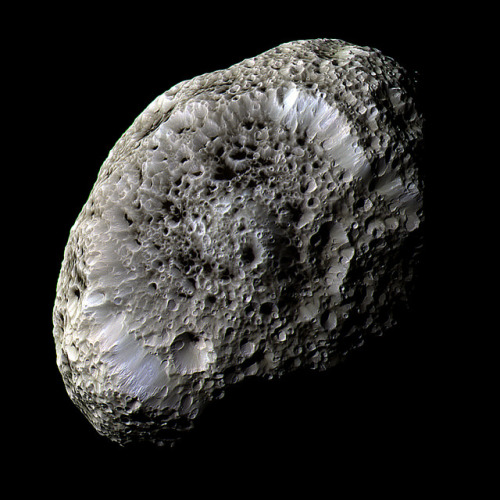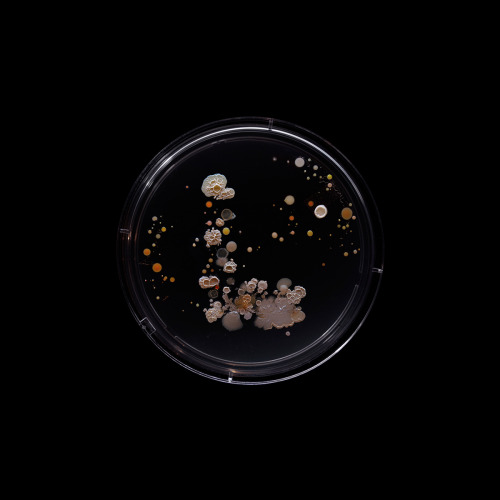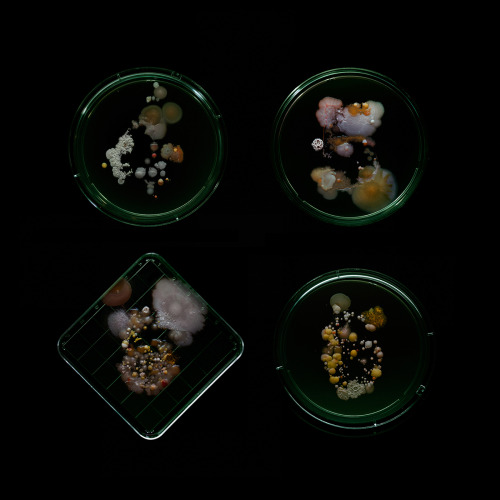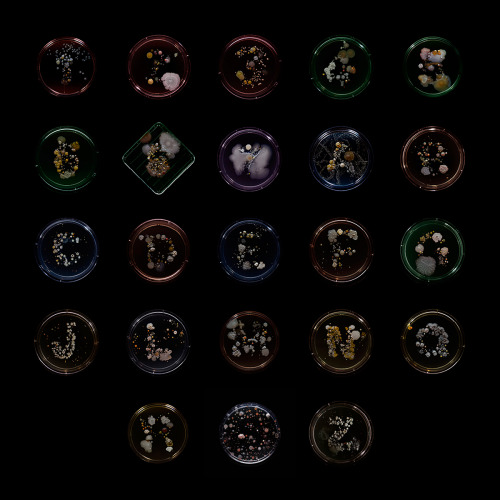On Military Live Fire Training Ranges, Troops Practice Firing Artillery Shells, Drop Bombs On Old Tanks

On military live fire training ranges, troops practice firing artillery shells, drop bombs on old tanks or derelict buildings and test the capacity of new weapons.
But those explosives and munitions leave behind toxic compounds that have contaminated millions of acres of U.S. military bases – with an estimated cleanup bill ranging between $16 billion and $165 billion.
In a paper published online Nov. 16 in Plant Biotechnology Journal, University of Washington and University of York researchers describe new transgenic grass species that can neutralize and eradicate RDX – a toxic compound that has been widely used in explosives since World War II.
UW engineers introduced two genes from bacteria that learned to eat RDX and break it down into harmless components in two perennial grass species: switchgrass (Panicum virgatum) and creeping bentgrass (Agrostis stolonifera). The best-performing strains removed all the RDX from a simulated soil in which they were grown within less than two weeks, and they retained none of the toxic chemical in their leaves or stems.
Continue Reading.
More Posts from The-sleepy-chemist and Others

Sea Slug - Phyllodesmium serratum
Phyllodesmium serratum (Nudibranchia - Facelinidae) is a colorful species of sea slug known from Japan, Philippines and Australia, whose color is dependent on the color of the food it is eating.
As seen in the photo, it has branched digestive glands that ramify into the cerata and dorsal surface of the body.
Although one of the most interesting adaptations found in this genus is the widespread participation in a symbiotic relationship with photosynthetic dinoflagellates (zooxanthellae), P. serratum does not have such a relationship, and is unusual in feeding on a wide variety of octocorals.
References: [1] - [2] - [3]
Photo credit: ©Klaus Stiefel (CC BY-NC 2.0) | Locality: Kurnell, Sydney, New South Wales, Australia (2013)
Using the Power of Space to Fight Cancer
From cancer research to DNA sequencing, the International Space Space is proving to be an ideal platform for medical research. But new techniques in fighting cancer are not confined to research on the space station. Increasingly, artificial intelligence is helping to “read” large datasets. And for the past 15 years, these big data techniques pioneered by our Jet Propulsion Laboratory have been revolutionizing biomedical research.
Microgravity Research on Space Station
On Earth, scientists have devised several laboratory methods to mimic normal cellular behavior, but none of them work exactly the way the body does. Beginning more than 40 years ago aboard Skylab and continuing today aboard the space station, we and our partners have conducted research in the microgravity of space. In this environment, in vitro cells arrange themselves into three-dimensional groupings, or aggregates. These aggregates more closely resemble what actually occurs in the human body. Cells in microgravity also tend to clump together more easily, and they experience reduced fluid shear stress – a type of turbulence that can affect their behavior. The development of 3D structure and enhanced cell differentiation seen in microgravity may help scientists study cell behavior and cancer development in models that behave more like tissues in the human body.

In addition, using the distinctive microgravity environment aboard the station, researchers are making further advancements in cancer therapy. The process of microencapsulation was investigated aboard the space station in an effort to improve the Earth-based technology. Microencapsulation is a technique that creates tiny, liquid-filled, biodegradable micro-balloons that can serve as delivery systems for various compounds, including specific combinations of concentrated anti-tumor drugs. For decades, scientists and clinicians have looked for the best ways to deliver these micro-balloons, or microcapsules, directly to specific treatment sites within a cancer patient, a process that has the potential to revolutionize cancer treatment.

A team of scientists at Johnson Space Center used the station as a tool to advance an Earth-based microencapsulation system, known as the Microencapsulation Electrostatic Processing System-II (MEPS-II), as a way to make more effective microcapsules. The team leveraged fluid behavior in microgravity to develop a new technique for making these microcapsules that would be more effective on Earth. In space, microgravity brought together two liquids incapable of mixing on Earth (80 percent water and 20 percent oil) in such a way that spontaneously caused liquid-filled microcapsules to form as spherical, tiny, liquid-filled bubbles surrounded by a thin, semipermeable, outer membrane. After studying these microcapsules on Earth, the team was able to develop a system to make more of the space-like microcapsules on Earth and are now performing activities leading to FDA approval for use in cancer treatment.

In addition, the ISS National Laboratory managed by the Center for the Advancement of Science in Space (CASIS) has also sponsored cancer-related investigations. An example of that is an investigation conducted by the commercial company Eli Lilly that seeks to crystallize a human membrane protein involved in several types of cancer together with a compound that could serve as a drug to treat those cancers.
“So many things change in 3-D, it’s mind-blowing – when you look at the function of the cell, how they present their proteins, how they activate genes, how they interact with other cells,” said Jeanne Becker, Ph.D., a cell biologist at Nano3D Biosciences in Houston and principal investigator for a study called Cellular Biotechnology Operations Support Systems: Evaluation of Ovarian Tumor Cell Growth and Gene Expression, also known as the CBOSS-1-Ovarian study. “The variable that you are most looking at here is gravity, and you can’t really take away gravity on Earth. You have to go where gravity is reduced."
Crunching Big Data Using Space Knowledge

Our Jet Propulsion Laboratory often deals with measurements from a variety of sensors – say, cameras and mass spectrometers that are on our spacecraft. Both can be used to study a star, planet or similar target object. But it takes special software to recognize that readings from very different instruments relate to one another.
There’s a similar problem in cancer research, where readings from different biomedical tests or instruments require correlation with one another. For that to happen, data have to be standardized, and algorithms must be “taught” to know what they’re looking for.
Because space exploration and cancer research share a similar challenge in that they both must analyze large datasets to find meaning, JPL and the National Cancer Institute renewed their research partnership to continue developing methods in data science that originated in space exploration and are now supporting new cancer discoveries.
JPL’s methods are leading to the development of a single, searchable network of cancer data that researcher can work into techniques for the early diagnosis of cancer or cancer risk. In the time they’ve worked together, the two organizations’ efforts have led to the discovery of six new Food and Drug Administration-approved cancer biomarkers. These agency-approved biomarkers have been used in more than 1 million patient diagnostic tests worldwide.
Make sure to follow us on Tumblr for your regular dose of space: http://nasa.tumblr.com
Lab life
Constantly using acetone to wash your glassware which ends up making your nails super brittle 💔

Saturn’s sponge-like moon Hyperion by europeanspaceagency on Flickr.



Subvisual Subway - Bacteria of the New York City subway- Craig Ward
Roses are red Your titriant is pink You failed Go throw your diploma in the sink
Roses are redYour titrant is pinkYou’re not within 2% of the actual valueYou automatically drop a full letter grade on this assignment because achem is a bitch

Happiness Molecule

Straight Outta Answers
Blood Vessels, part 1 - Form and Function By CrashCourse
Now that we’ve discussed blood, we’re beginning our look at how it gets around your body. Today Hank explains your blood vessels and their basic three-layer structure of your blood vessels. We’re also going over how those structures differ slightly in different types of vessels. We will also follow the flow of blood from your heart to capillaries in your right thumb, and all the way back to your heart again. Table of Contents The Basice Three-Layer Structure of Your Blood Vessels 2:17 Different Types of Vessels 3:36 The Flow of Blood From Your Heart to Capillaries 3:59 The Flow From Capillaries to the Heart 7:01

Corrugated Liomera - Liomera rugata
This ultra-pinkish crab (actually magenta) is scientifically named Liomera rugata (Decapoda - Xanthidae), a species which inhabits in coral reefs of the Red Sea, Tahiti, Hawaii, Philippines, China Sea, Japan, India and French Polynesia. It is also commonly known as Corrugated Crab due to the visible granules that cover the surface of carapace.
References: [1] - [2]
Photo credit: ©Todd Aki | Locality: Hilo, Hawaii (2014)
-
 blacksmithprincess reblogged this · 8 years ago
blacksmithprincess reblogged this · 8 years ago -
 blacksmithprincess liked this · 8 years ago
blacksmithprincess liked this · 8 years ago -
 dancewithme99 reblogged this · 8 years ago
dancewithme99 reblogged this · 8 years ago -
 my-neuroglia reblogged this · 8 years ago
my-neuroglia reblogged this · 8 years ago -
 kittiescatscats liked this · 8 years ago
kittiescatscats liked this · 8 years ago -
 gkar56 liked this · 8 years ago
gkar56 liked this · 8 years ago -
 bet-u-la reblogged this · 8 years ago
bet-u-la reblogged this · 8 years ago -
 kairaion reblogged this · 8 years ago
kairaion reblogged this · 8 years ago -
 hufflepirate liked this · 8 years ago
hufflepirate liked this · 8 years ago -
 friendlylike reblogged this · 8 years ago
friendlylike reblogged this · 8 years ago -
 ctkvi liked this · 8 years ago
ctkvi liked this · 8 years ago -
 captainsheepish reblogged this · 8 years ago
captainsheepish reblogged this · 8 years ago -
 androgynousdragongay reblogged this · 8 years ago
androgynousdragongay reblogged this · 8 years ago -
 knivesandteeth reblogged this · 8 years ago
knivesandteeth reblogged this · 8 years ago -
 bas1l liked this · 8 years ago
bas1l liked this · 8 years ago -
 taminnugget reblogged this · 8 years ago
taminnugget reblogged this · 8 years ago -
 radianthour liked this · 8 years ago
radianthour liked this · 8 years ago -
 ghostgripx liked this · 8 years ago
ghostgripx liked this · 8 years ago -
 spacehunter-m liked this · 8 years ago
spacehunter-m liked this · 8 years ago -
 jackassrabbit liked this · 8 years ago
jackassrabbit liked this · 8 years ago -
 sarkos reblogged this · 8 years ago
sarkos reblogged this · 8 years ago -
 primordial-soupp-blog reblogged this · 8 years ago
primordial-soupp-blog reblogged this · 8 years ago -
 tolstoy-obsessed-blog liked this · 8 years ago
tolstoy-obsessed-blog liked this · 8 years ago -
 beckernyms reblogged this · 8 years ago
beckernyms reblogged this · 8 years ago -
 20drawnroses reblogged this · 8 years ago
20drawnroses reblogged this · 8 years ago -
 20drawnroses liked this · 8 years ago
20drawnroses liked this · 8 years ago -
 bachatanero reblogged this · 8 years ago
bachatanero reblogged this · 8 years ago -
 falekakala reblogged this · 8 years ago
falekakala reblogged this · 8 years ago -
 lessimpactkala-blog reblogged this · 8 years ago
lessimpactkala-blog reblogged this · 8 years ago -
 seirye reblogged this · 8 years ago
seirye reblogged this · 8 years ago -
 theblacksmudge reblogged this · 8 years ago
theblacksmudge reblogged this · 8 years ago -
 nadiatbh reblogged this · 8 years ago
nadiatbh reblogged this · 8 years ago -
 rm-liminal reblogged this · 8 years ago
rm-liminal reblogged this · 8 years ago -
 jawek reblogged this · 8 years ago
jawek reblogged this · 8 years ago -
 jpolart reblogged this · 8 years ago
jpolart reblogged this · 8 years ago -
 catchinghammers liked this · 8 years ago
catchinghammers liked this · 8 years ago -
 gardeningplants-blog liked this · 8 years ago
gardeningplants-blog liked this · 8 years ago -
 lemondedunefemme liked this · 8 years ago
lemondedunefemme liked this · 8 years ago -
 pendragyn liked this · 8 years ago
pendragyn liked this · 8 years ago -
 adragonnamedpetey liked this · 8 years ago
adragonnamedpetey liked this · 8 years ago
60 posts